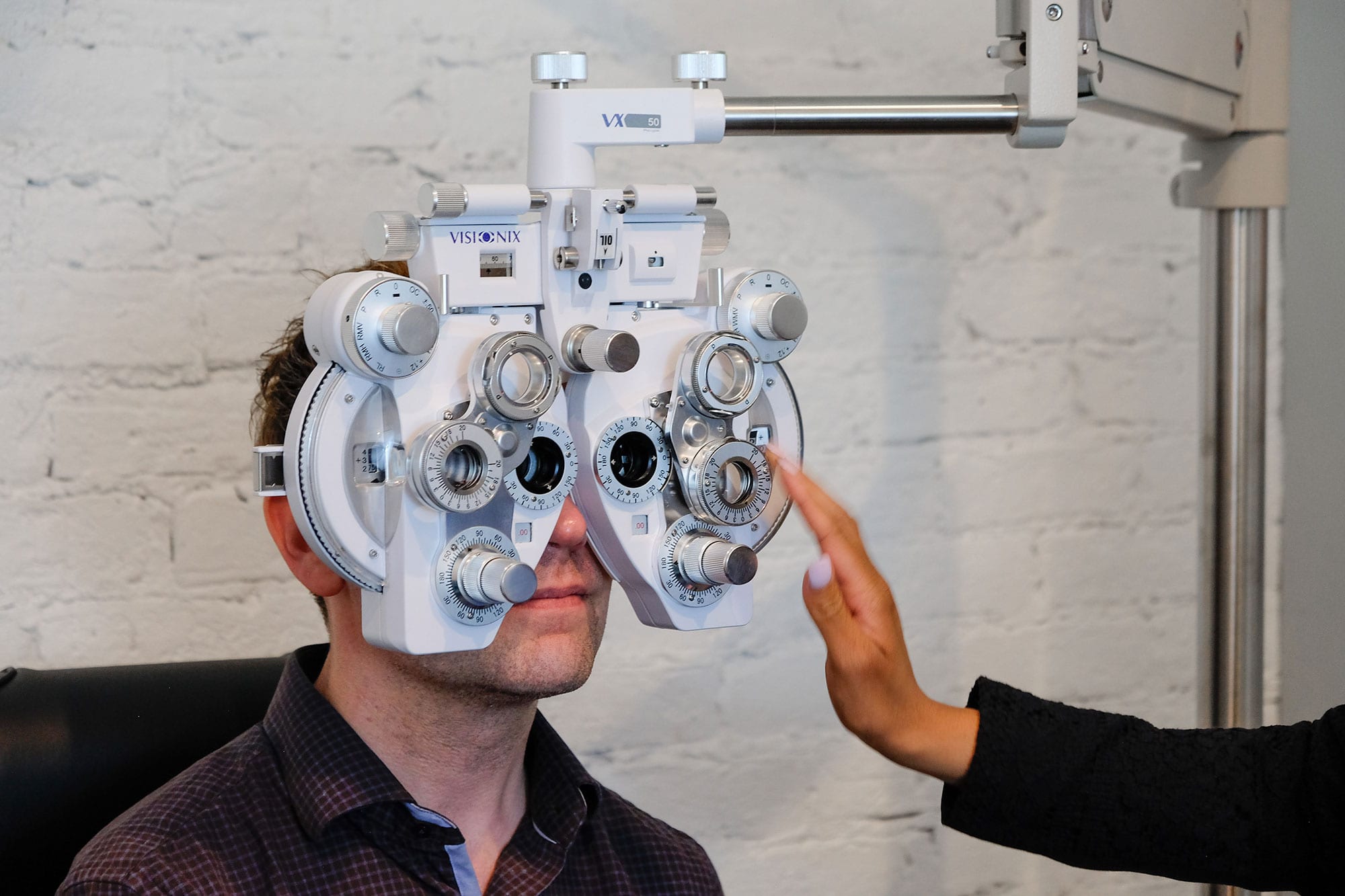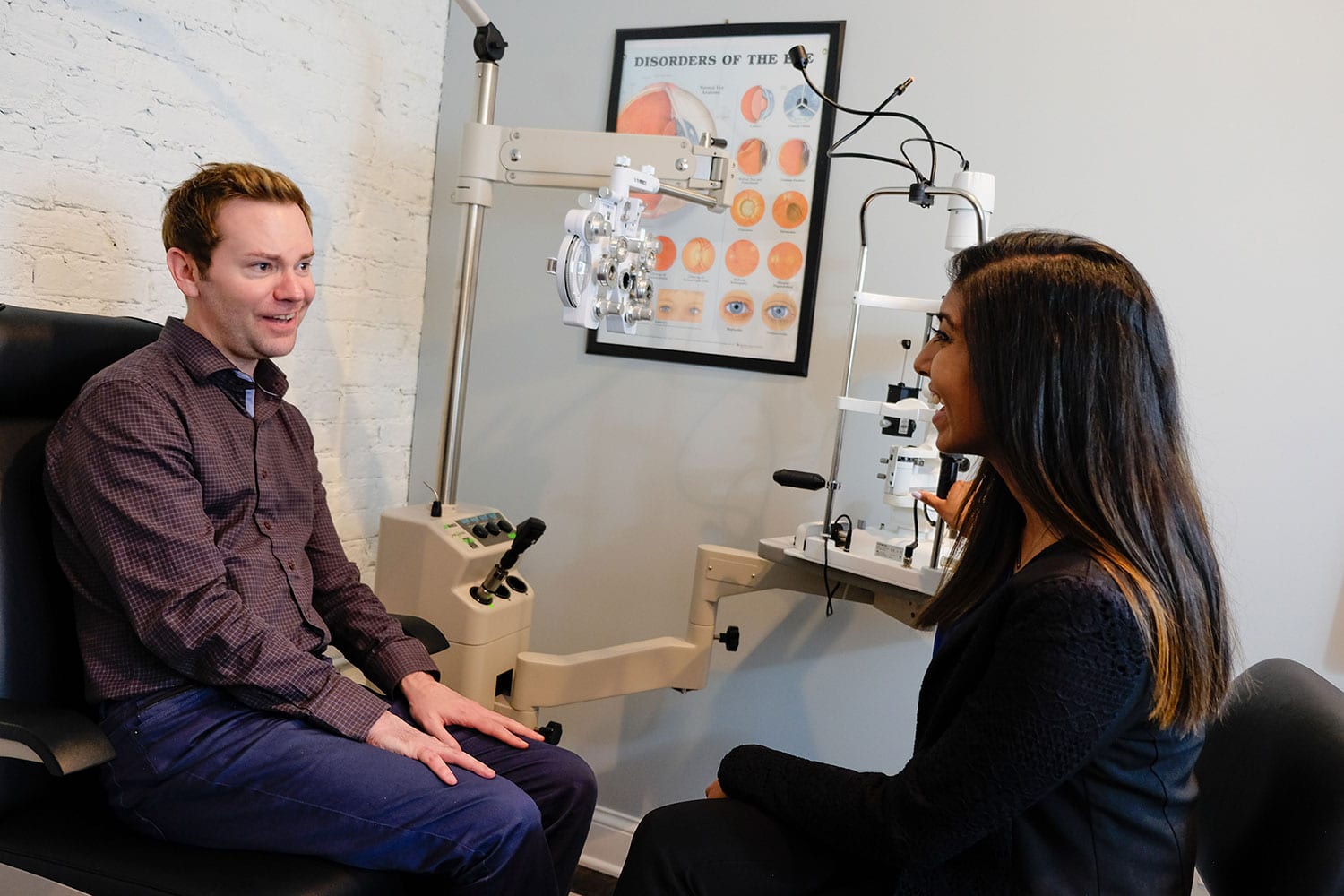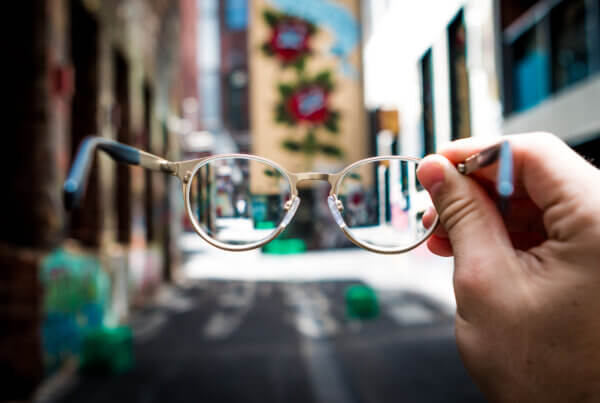1. Hyperopia Degeneration: What You Need to Know about Farsightedness
It is estimated that approximately 25% of the population has a common vision problem known as farsightedness (hyperopia degeneration). If you have been diagnosed with this eye condition, it means that you can see distant objects clearly. But you probably have a hard time focusing on objects when they are up close.
2. Symptoms of Hyperopia Degeneration
The symptoms of this eye condition typically include:
- Eye strain
- Headaches
- Blurred vision when looking at close objects
- Squinting eyes
- Eye fatigue
Regardless of your current use of glasses or contact lenses, it is smart to visit a local optometrist if you experience these symptoms. When patients are already using corrective lenses, it means that a new prescription might be needed. If you don’t already wear glasses or contacts, then it might be time to start using corrective lenses each day. Your eye doctor can help you diagnose the cause of the symptoms and determine the right treatment for hyperopia degeneration.
.
3. Hyperopia Causes
When a person has hyperopia, it means that vision problems are occurring due to the way light rays enter the eye. The light is focused behind the retina instead of on the retina directly. It’s been found that the eyeball size is shorter than the average person, which explains why the light focus isn’t in alignment with the retina.
In many cases, children are born farsighted. Some children “outgrow” the problem because normal growth helps to balance the size of the eyeball as it lengthens.
It’s been found that hyperopia can affect both adults and children, and approximately 5 – 10% of the population in the United States has this eye condition. If the parents have hyperopia, then it increases the risk that their children will have hyperopia as well.
4. Hyperopia Treatment
Vision correction lenses can be used for patients with farsightedness. The most common treatment method is to wear eyeglasses or contact lenses. These lenses adjust the way the light bends in the eyes, helping to focus the light on the retina.
If you need vision correction lenses for farsightedness, you’ll see that your prescription starts with plus numbers, such as +2.50. This plus is an indicator to show how the lens needs to be shaped and designed to accommodate your vision needs.
Some people need to wear vision correction lenses throughout the day. In other situations, patients need to have glasses on hand so they can be used for specific close-up activities, such as reading or looking at a computer screen.
Another possible treatment is to choose refractive surgery, such as LASIK. Your eye doctor can help you determine if you are a good candidate for this treatment. Refractive surgery is a good solution for patients who don’t want to worry about wearing glasses or contact lenses each day. The surgery can either reduce or completely eliminate the need to wear corrective lenses.
5. Glasses or Contacts for Hyperopia?
If you have been diagnosed with hyperopia, is it better to choose glasses or contact lenses? It depends on your preferences and needs. Eyeglasses tend to be the simplest and safest treatment. But some patients don’t like the need to wear eyeglasses throughout the day. If you participate in sports activities, then contact lenses might be a better solution.
Your eye doctor can help you identify the right lenses and the right fit to ensure that you are comfortable wearing your corrective lenses.
6. Refractive Errors: Hyperopia vs. Myopia vs. Presbyopia vs. Astigmatism
Sometimes, hyperopia is confused with myopia or presbyopia. For example, presbyopia also results in near vision problems, but vision issues occur for different reasons. Just because near vision problems are occurring, doesn’t mean that a person can jump to conclusions regarding the actual diagnosis.
A refractive error happens when the light can’t be focused within the eye properly. For optimal vision, the light needs to be focused on the retina. If the light is focused elsewhere, then it can result in blurry vision.
Here is an overview of the refractive errors that might require you to wear corrective lenses:
- Myopia: Also known as near-sighted, which means that the patient has a hard time seeing objects at a distance. The shape of the eye is too long, which affects the way the light shines on the retina.
- Hyperopia: Also known as far-sighted, which means that the patient has a hard time seeing objects nearby, such as a book or computer screen. The shape of the eye is too short, making it the opposite problem of myopia.
- Presbyopia: An age-related condition that usually starts between 40 and 50 years old. The eye lens loses the flexibility to adjust focus between near and far objects. As a result, it becomes difficult to read nearby objects, such as a book or paper. If a person has myopia and presbyopia, then bifocal or progressive lenses are often recommended which provide a prescription for both near and far distance.
- Astigmatism: While hyperopia and myopia happen due to the length of the eye being too long or short, astigmatism happens when the cornea surface is uneven. This uneven area results in images that are distorted.
7. Hyperopia or Presbyopia?
The most common confusion about similar refractive errors is due to the similarities between hyperopia and presbyopia. Both of these eye conditions are common, and the symptoms make it challenging to have clear vision when looking at nearby objects. As a result, it can be difficult to participate in everyday tasks, such as reading, working on the computer, or driving.
Even though these two refractive errors are similar in nature, the actual diagnosis is based on the cause of the refractive error. Identifying the cause of the eye condition is essential for a proper diagnosis, which is necessary for prescribing the right treatment.
Hyperopia Degeneration can happen at any age, although the condition tends to progress with time. Babies and young children can inherit this condition. On the other hand, presbyopia can’t be inherited at a young age. Presbyopia doesn’t occur until midlife, usually in the 40’s or 50’s. At this age, people have a hard time seeing nearby objects clearly, so they might hold the paper or book father away to enable them to see the words on the page.
8. Talk to a Local Optometrist
Whether you are having a hard time seeing objects up close or things far away, an experienced eye professional can assist. Call our team to schedule an exam to identify treatments to correct your vision.
Call today (773-360-8900) to schedule an exam and learn more.







